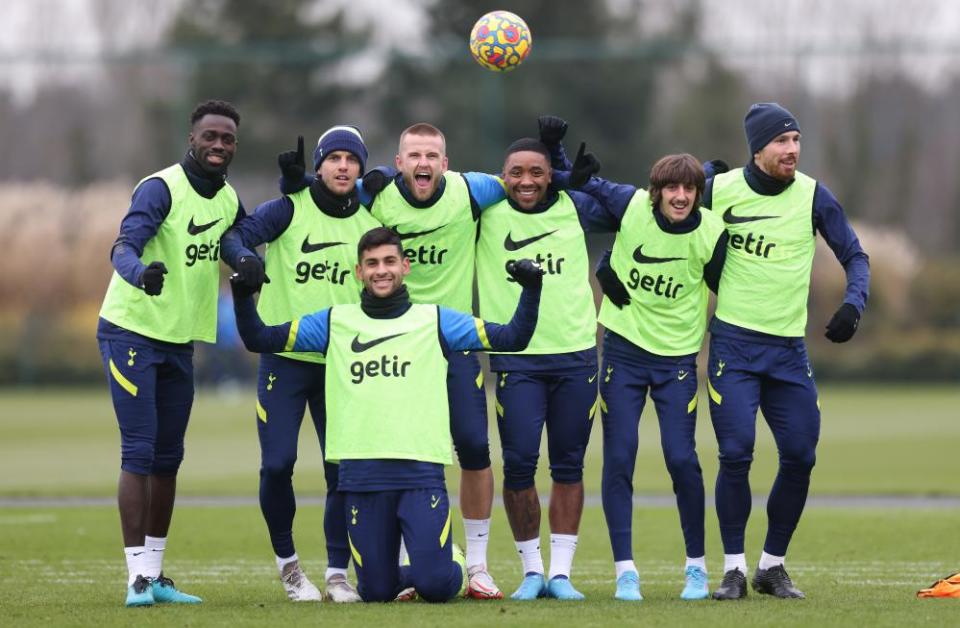Tottenham uprising gains sense of origin story with Antonio Conte

It felt like an end, not a beginning. Internazionale had just gone 2-0 down at home to Torino with half an hour to play and, as the camera panned to the touchline, Antonio Conte bore the expression of a man who had accepted an invitation to dinner only to discover that the menu would be entirely vegan. His side had won three of their opening seven games of the 2020-21 season and were eighth in Serie A. The prospect of mounting any sort of challenge for the scudetto seemed laughably remote.
At which point, something stirring and strange happened. Alexis Sánchez pulled one back after a goalmouth scramble. Romelu Lukaku bundled in a scruffy equaliser and then converted a contentious penalty with six minutes remaining.
Inter ended up winning 4-2 and with the benefit of hindsight – because who can really know these things at the time? – it was the point when all the pieces began to fall into place. Powered by the raw fumes of that comeback Inter went on a run of seven more straight wins that would set them on course for their first title in 11 years.
Related: Tottenham growing confident of signing Adama Traoré from Wolves
This is one of the hallmarks of Conte’s most successful teams: the moment when they seem at their weakest is the moment from which they draw their greatest strength. At some indeterminate point, whether through circumstance or epiphany, everything just clicks. The origins of Conte’s 2016-17 title win with Chelsea came in a famous half-time tactical switch during a 3-0 defeat to Arsenal. It was a 4-1 mauling against Germany that convinced Conte to try the 3-5-2 system that ended up taking Italy to the quarter-finals of Euro 2016.
As Conte’s Tottenham pulled off a remarkable 3-2 victory at Leicester on Wednesday, it was tempting to wonder whether we were witnessing another such moment. Trailing 2-1 five minutes into stoppage time, Tottenham improbably stole all three points with two Steven Bergwijn goals, igniting uncontrolled celebrations in the away end, on the pitch and on the touchline.
For a club that has spent much of the past three years in a sort of waking sleep, this felt new and bracing. Would we look back on those two wild minutes as the point the Conte revolution finally began to take flight?
The first thing to say is that Tottenham have been playing decent football for a while now. It may be hard to unpick all the various narrative strands: the Covid interruptions, the humiliation at NS Mura, the elimination from Europe, twice being outclassed by Chelsea in the Carabao Cup, Conte grumbling about transfers, the slow egress of the club’s record signing, Tanguy Ndombele.
But in a parallel universe, Tottenham are yet to lose in the Premier League under Conte. Only Manchester City have won more points a game since his arrival. Even before the Miracle of the King Power, the foundations of a resurgence were being built.

But all good uprisings need an origin story, a moment of growth, and this is where Conte comes in. For all his reputation as a quick-fix, shock-therapy coach, his methods rarely bear immediate fruit. Indeed, the early days of a Conte stewardship are often rich in conflict and reluctance, the sound of an expert Italian bullshit-detector sniffing around the place and deciding who needs to stay, who needs to go and who needs a double dose of yo-yo tests and a strict keto diet.
“Better to create a deep wound that will lead to an even deeper healing,” Conte’s fitness coach, Giampiero Ventrone, told FourFourTwo in 2017. “The bigger the disruption, the better the results. At first the impact is severe: the players react badly. But after two or three months the situation changes. While the player is complaining, there’s a change in him that will ultimately lead to improvement. The results arrive.”
The sight of Ventrone screaming at Tottenham’s fringe players as he put them through a series of gruelling post-match sprints early in the Conte reign offers just a hint of the confrontational leadership to which the squad has already been subjected. But the remoulding process goes beyond simple physical coercion and is much more dialectic than is often assumed.
Tactically and psychologically, Conte tries to drill a win-at-all-costs habit into his players. But only when that improvement is borne out in the shape of tangible results does it really begin to make sense. Until then, it’s just a very angry middle-aged man shouting about spaces and desire.
This is why the Leicester game felt like such a watershed. From front to back – and with the caveat that they still look defensively brittle – Tottenham demonstrated a vigour and purpose that was painfully absent during Nuno Espírito Santo’s miserable tenure. The sight of Harry Kane getting off 10 shots – many of them admittedly stupid efforts from distance – was nevertheless a sign the England captain may just have begun to back himself again.
Tottenham visit Stamford Bridge on Sunday. It is the third time these teams have met in the space of three weeks and on the first two occasions the gulf between them was sharply evident. By the same token these are two clubs on very different trajectories: one doubting themselves, one believing.
Are Tottenham still imprisoned by their flaws or have they really turned the corner? Sunday afternoon seems as good a time as any to find out.

 Yahoo Sport
Yahoo Sport 





































